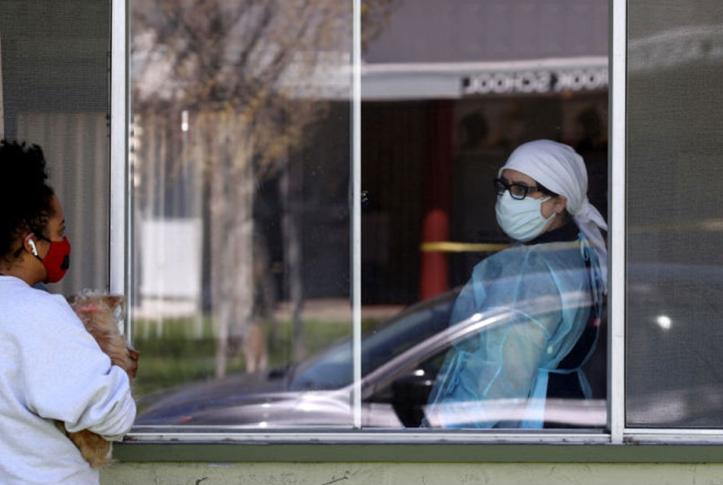The COVID-19 pandemic revealed multiple existing problems which existed within the nursing home industry for many years. The crisis exposed nursing home residents to extreme danger because staff shortages and poor infection prevention measures proved that safety protocols did not work. The pandemic’s peak has passed but nursing home safety regulations and accountability standards continue to influence government policies and legal actions and family expectations for long-term care facilities.
The blog examines permanent safety changes in nursing homes because of COVID-19 and their effects on residents and their families and facility managers.
The Pandemic’s Devastating Toll on Nursing Homes
The initial phase of the pandemic revealed that nursing homes started to spread infections at a fast pace. The most vulnerable population included residents who were mostly older adults with existing medical conditions. The United States experienced nursing home and long-term care facility deaths which accounted for about thirty percent of all COVID-related fatalities according to various reports.
Multiple elements led to this fatal situation.
Staffing shortages that left facilities unable to provide adequate care.
Limited personal protective equipment (PPE) for staff, leading to rapid virus spread.
The outbreak of COVID-19 revealed that different healthcare institutions and state medical facilities operated under different infection prevention guidelines.
The testing process experienced delays which stopped healthcare workers from starting their work at an early stage.
The families experienced total devastation because visiting their relatives became totally impossible and they lost all possibilities of direct contact. Abuse and neglect cases often remain hidden until the damage becomes apparent.
How Safety Standards Have Shifted
The pandemic forced healthcare organizations to conduct emergency evaluations of their nursing home safety procedures. The situation has improved at certain facilities but several obstacles continue to exist. The organization has made several important changes.
1. Greater Focus on Infection Control
Organizations must now follow stricter rules to prevent infections through improved cleaning methods and better PPE availability and they need to hire specialists who focus on infection prevention. The regulatory authorities will step in when facilities refuse to follow these established procedures.
2. Enhanced Emergency Preparedness
The COVID-19 pandemic revealed that numerous facilities did not possess adequate emergency response systems for large-scale disasters. The government requires states to develop emergency preparedness plans which must address all types of disasters including pandemics and natural disasters and other emergency situations.
3. Increased Transparency Requirements
The public demands improved access to information about disease spread and staff numbers and safety problems. Nursing homes across multiple states need to disclose their COVID-19 statistics and other disease outbreak information to both regulatory bodies and the general public.
4. Stricter Visitation Policies with Balance
The pandemic forced visitation limits which created deep emotional suffering for all people. Today, regulators emphasize balancing safety with residents’ rights to family contact. Facilities need to explain why they restrict access while they must offer remote visitation when direct human contact becomes restricted.
Accountability in the Post-COVID Era
The COVID-19 crisis generated essential questions about nursing home facility accountability.
The public asked for details about disease outbreaks and care problems and preventable deaths.
Legal Immunity Controversies
Nursing homes across different states obtained short-term legal protection against COVID-related lawsuits through lobbying efforts because they claimed the pandemic created an unprecedented situation which made it unfair to hold them accountable for things they could not prevent. The criticism focuses on immunity laws because they allowed negligent facilities to stay off the hook while denying families any chance to seek compensation.
The expiration of immunity provisions has led to more lawsuits from families who claim facilities did not follow basic infection control standards. The courts will determine the degree of accountability nursing homes should have for their pandemic-related mistakes.
Staffing as a Central Issue
The pandemic revealed ongoing staff shortages which create major problems for nursing home care quality. The healthcare facilities need more skilled personnel for their operations today. The nursing home industry faces potential transformation because regulators want to create new minimum staffing rules yet nursing home operators fight against these proposed changes.
Federal and State Oversight
Government agencies have ramped up inspections and enforcement.The Centers for Medicare and Medicaid Services (CMS) has established new penalty systems for healthcare facilities that show repeated non-compliance with health and safety requirements. State health departments have increased their outbreak tracking activities while tracking healthcare worker availability.
Long-Term Impacts on Families and Residents
COVID-19 has brought lasting changes to family members’ attitudes about nursing homes which extend past all regulatory frameworks and legal actions.
People now exercise greater caution when deciding to place their family members into care facilities because they actively check inspection results and staffing numbers and safety records.
The public wants to know about disease outbreaks and staff shortages as they happen. Nursing facilities which do not maintain proper communication risk losing the trust of their residents.
Family members together with elder advocacy organizations have started to push for major changes which include better staffing standards and enhanced protection of resident rights.
Alternative Care Models: Some families now prefer in-home care or smaller assisted living arrangements to avoid the risks associated with larger nursing homes.
How Families Can Protect Their Loved Ones
Every family needs to maintain their nursing home safety procedures during the process of healthcare reform implementation. The following steps will protect your family members:
Research Facilities Thoroughly
Review state inspection reports, staffing data, and online reviews before choosing a nursing home.
Stay Involved
Regular visits, whether in-person or virtual, can deter neglect and ensure residents receive proper care.
Monitor Health and Hygiene
Look for signs of malnutrition, bedsores, poor hygiene, or sudden changes in behavior that may indicate neglect.
Know Residents’ Rights
Federal law provides nursing home residents with specific rights that protect them from any form of abuse or neglect. Knowledge about these rights enables families to support their cause successfully.
Seek Legal Help When Needed
An Albuquerque nursing home abuse lawyer who focuses on nursing home cases should handle your situation when someone you care about experiences neglect or abuse. The investigation will determine if the facility failed to follow safety standards and will seek to establish responsibility.
The nursing home industry continues to experience permanent effects which emerged because of the COVID-19 pandemic. The investigation exposed deep-rooted issues which led to faster regulatory changes and modified public understanding of extended care needs. The field has advanced in infection control and emergency preparedness and oversight yet staffing shortages and transparency issues continue to pose problems.
The pandemic taught families to stay alert while fighting for their rights. The event revealed to nursing homes that they must take responsibility for their actions while making resident safety their main focus. The industry will maintain its progress by using the knowledge from COVID-19 to guide future actions. The protection of vulnerable seniors demands permanent solutions instead of short-term interventions.



































